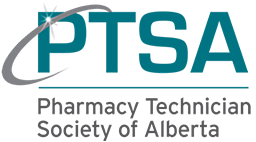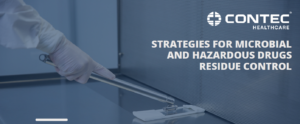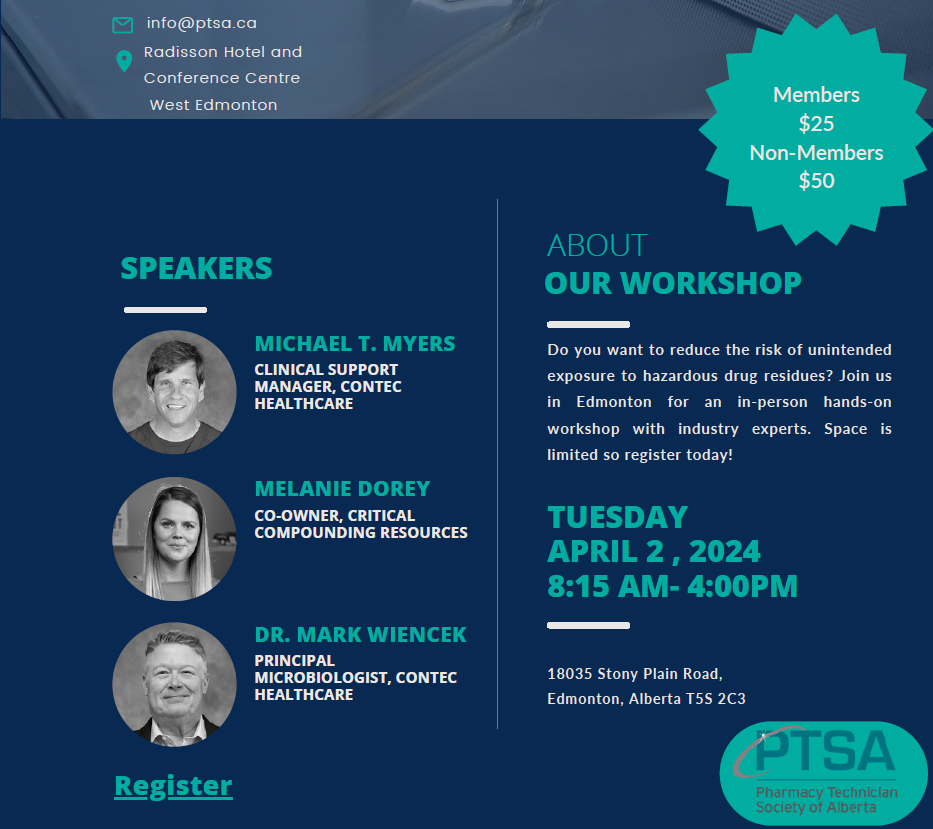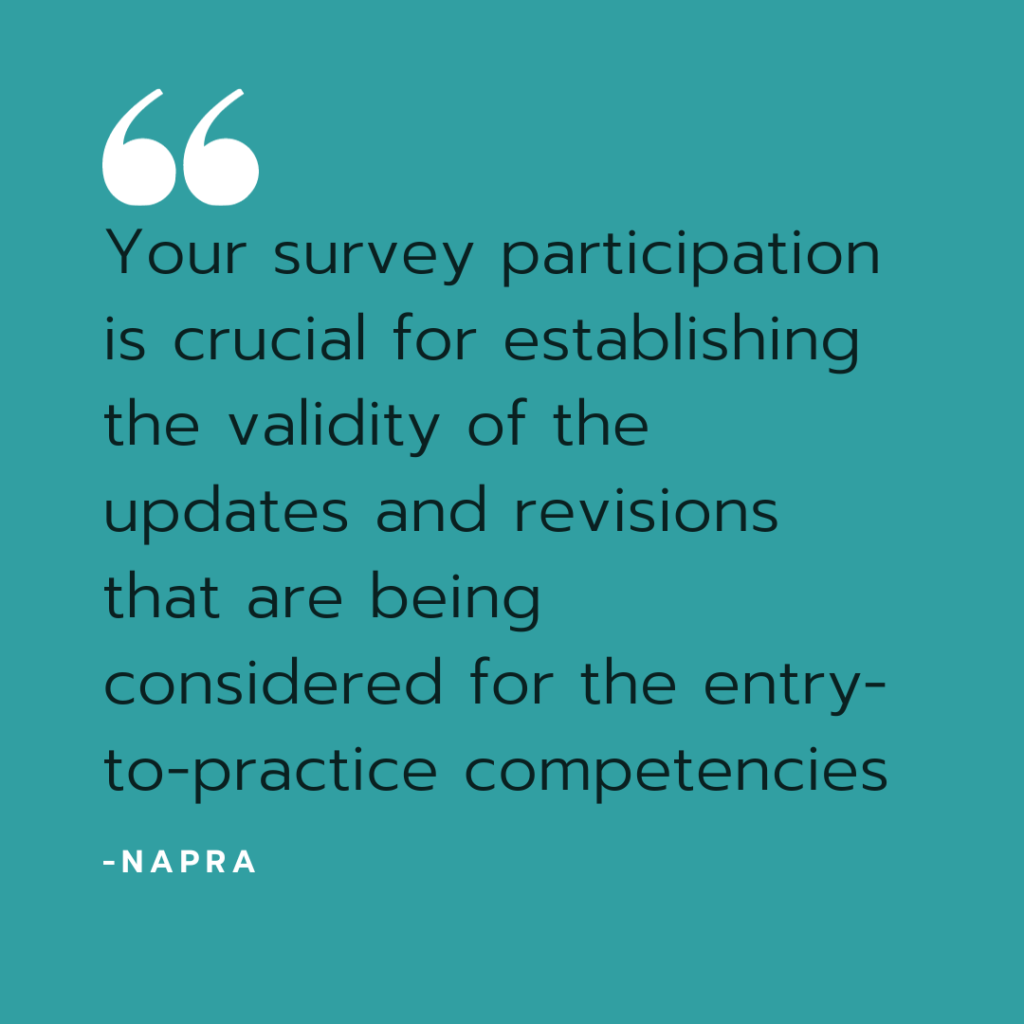Did you know that the pharmacy workforce is the third largest regulated workforce in the world? Despite that status, there is a growing shortage of pharmacy technicians and pharmacists. This issue is one of national and global concern and hits close to home because it can affect the care provided to Albertans.
PTSA was given the opportunity to explore this issue and contribute ideas about how we can address this growing challenge. On March 7 & 8, 2024, President Bullock and I attended a Human Resource Forum hosted by the Alberta College of Pharmacy (ACP). We represented PTSA as part of a select group of leaders, with various experiences and insights, that came together to identify opportunities to build the capacity of pharmacy teams.
Here are some stats to set a picture of the current state of our workforce:
- About 55% of Alberta pharmacy technicians practice in institutional settings.
- Less than 30% of community pharmacy teams include a pharmacy technician.
- About 13% of community pharmacy teams include more than one pharmacy technician.
- The number of pharmacy technicians has been increasing but at a very slow pace.
- It is estimated that over 50% of individuals working in a pharmacy are unregulated.
Led by expert facilitator, Don Winn (some of you may remember him from the 2018 Alberta Pharmacy Technician Conference), we were tasked with trying to better understand factors contributing to current state and what could be improved in three areas:
- Attracting and building workforce
- Hiring and retaining workforce
- Building capacity with a static workforce
We delved into discussions focused on innovative strategies to attract and recruit new talent into the pharmacy professions, exploring issues like job satisfaction, work-life balance, and professional development opportunities, as well as optimizing workflows and leveraging technology to enhance efficiency in pharmacy practices.
It was quickly apparent that there are similarities between issues affecting pharmacy technicians and pharmacists. Gaps may exist between students’ expectations and the reality of pharmacy roles. There is value in mentorship to enhance job satisfaction and career development. Streamlined workflows can enable pharmacy professionals to meet the needs of patients. Despite some alignment, the pharmacy technician profession faces unique challenges too, and solutions for both professions are needed.
At the end of the day, we left the forum with some ideas for how pharmacy technicians, pharmacists, organizational leaders, employers, academics, and even members of the public can start to facilitate change. But that is just the beginning! The leading organizations, including PTSA, ACP, the Alberta Pharmacists Association (RxA) and University of Alberta are now tasked with deciding how to develop coalitions to prioritize and work on achieving the proposed solutions.
Want to learn more about the proposed solutions? Stay tuned for regular updates.
Leave a comment below to let us know what challenges you are facing in your practice or share your ideas for improvements.
About the Author: Teresa Hennessey is a pharmacy technician with 25 years of front-line and leadership experience in both community and hospital pharmacies. She is the Administrator for PTSA.



